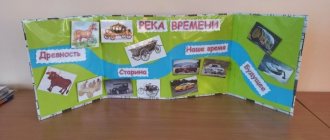The project is dedicated to the 70th anniversary of Victory in the Great Patriotic War
The project is dedicated to the 70th anniversary of Victory in the Great Patriotic War and is aimed at educating citizenship and patriotism. Students will learn about the exploits of Soviet people during the Second World War. They collect information about relatives and acquaintances, about all those whose fate was in one way or another affected by the Great Patriotic War. These could be combatants, children of war, home front workers, etc. depending on the capabilities of the team.
Questions guiding the project:
The fundamental question is: how will the memory of war help preserve peace?
Problematic issues:
- Why do people cry on holiday?
- Why do people remember the Great Patriotic War?
- Why is “generational connection” important to us?
Private questions:
- What do we know about the Great Patriotic War? What works of art remind us of this war?
- How do you become heroes in war?
- How can we preserve the memory of the events of that war?
Business card of the project dedicated to the 70th anniversary of Victory in the Great Patriotic War
Implementation plan for the project “We Preserve Eternal Memory”
"Winners"
The “Winners” project (pobediteli.ru), created for the 60th anniversary of the Victory, is a civil initiative of individuals and companies. The most important part of the project is a search system for lists of WWII veterans, which helps people find each other.
According to the creators of the project, literally from the first day they began to receive letters from site visitors who found their relatives and friends on the list who were considered dead. It turned out that, despite the fact that the war ended more than 60 years ago, not all relatives and friends found each other.
The creators of the project publish requests for searches for WWII veterans. People who find out that someone is looking for them, or their friends, provide the site administration with their contact information. This way, people who are looking for each other can contact directly and finally meet.
Another interesting part of the project is a multimedia map of the war with the memories of participants and archival chronicles. This is an interactive map that clearly presents the entire history of the military operations of the Second World War. Key points are accompanied by additional information with photographs and videos, as well as audio recordings of veterans' memories.
The Great Patriotic War - a booklet for parents
The booklet for parents introduces a summary of the project and answers key questions. During the project, students will conduct research, get acquainted with works, collect and publish materials about the Great Patriotic War.
An example of a student project activity product
Diary of the “Luchiki” team in Rasskazovo, contents:
- Self-assessment sheet: Stage 1 “Getting to know each other”
- Stage “Memory of the Second World War” and description
- Self-assessment sheet: Stage 2 “Memory of the Second World War”
- Team work at the stage “Memory of the Great Patriotic War”
- Self-assessment sheet: Stage 3 “Celebration with tears in our eyes”
- Self-assessment sheet: stage 4 “Connection of generations”
- Self-assessment sheet: final stage
Thanks to this project, we learned many previously unknown facts about the Great Patriotic War of 1941-1945. It was very interesting for us to study the history of our country not only as part of the educational process, but from additional sources of information, which is what this project is.
Working on the project turned out to be very interesting and educational.
Joint actions and discussions brought together a team of teachers, children and parents. The team shared the knowledge they gained with the whole class, relatives, and others.
Diary of the team "Luchiki"
Interview with veteran Stepanova Galina Sergeevna
War is an essay
Drawing competition “Let there always be sunshine”
Drawing competition “Let there always be sunshine.” The works were completed by our participants and are posted in the center’s gallery.
Formative and summative assessment materials
Materials for formative and summative assessments are presented in the form of various tables and forms. They allow you to evaluate the activities of project participants at each stage. Here are materials for the project dedicated to the 70th anniversary of Victory in the Great Patriotic War.
Table Z-I-U-K
Personal participation table
Form for self-organization of work within a team
Self-assessment forms
Interview preparedness form
Reflection for project participants
Great Army. Start of the hike
Having carefully prepared, Napoleon launched an invasion of Russia. He could not even imagine what catastrophe awaited him ahead. Beginning on June 11, 1812, the advanced units of Napoleonic army began crossing the Neman and Bug rivers in different places. Napoleon's army had a total strength of more than 600 thousand people; such a number of troops could not be assembled in one place, so the French acted in several directions.
Napoleon's strategic plan was to defeat the main forces of the Russian army in one, maximum two general battles. This is what he tried to accomplish. The Russian army was not inferior to Napoleonic's in terms of combat effectiveness, but was three times inferior in numbers; moreover, bad roads and long distances did not allow combining common forces together.
Barclay de Tolly, who commanded the 1st Army at the time of the invasion, was in the Baltic region, the 2nd Army was commanded by Bagration, which was in western Belarus. The decision was made to unite the two armies together. Napoleon understood that it would be easier to defeat the scattered enemy forces, so he tried with all his might to do this.
The two Russian armies retreated, avoiding major battles, but at the same time it was not a disorderly flight; they had to constantly repel attacks by large enemy units, who tried with all their might to prevent the connection of the two armies. Near Smolensk on August 3, 1812, the two armies united together, this was the first strategic victory.
Barclay de Tolly was appointed commander of the united army; he was not a supporter of a general battle, and his position had serious reasons for this. In the event of defeat, it would not be possible to equip a new combat-ready army, since in Russia at the beginning of the 19th century the current recruiting system did not allow this to be done in a short time.
They decided to retreat in the Moscow direction, leaving Bagration’s army of 34 thousand people as cover. Bagration restrained Napoleon's army storming Smolensk, and the main forces retreated in an organized manner without losses.
October militias
The most difficult days of the war were passing.
On October 7, 1941, almost all the troops of the Western and Reserve Fronts were surrounded near Vyazma - where by the 14th they had died or been captured.
There were almost no Soviet troops left between Army Group Center and Moscow, and the path to Moscow was open.
On the 16th, panic broke out in the capital. In the courtyard of house No. 32 on Bolshaya Tatarskaya, where my grandfather lived, janitors found works by the classics of Marxism-Leninism in the trash...
In those days, troops were gathered from the forest and from the pine trees to block at least the main directions leading from the west to Moscow.
And in the capital itself, on October 13, new militia units began to be formed. (The previous ones, formed in July, almost all disappeared by that day near Vyazma.)
On October 16, some of these units - workers from communist battalions - were brought together into the 1st Communist Regiment, in which my grandfather ended up.
The regiment became part of the Moscow Defense Forces. Specifically, as part of the 1st combat sector of the defensive line of the city of Moscow, which on October 24 was named the North-Western Defense Group of the City of Moscow, on the 28th - the Moscow Workers' Division, and on November 14 - the 3rd Moscow Communist Rifle Division.
The division headquarters was located at the Sokol metro station, in house No. 6 on Chapaevsky Lane.
Across the house from him, on what is now Leningradsky Prospekt, 65, my maternal relatives lived since 1934 - people from Gzhel near Moscow, hereditary ceramists who worked at the building located opposite. And from 1958 to 1964 - and my future mother...
In mid-November, my grandfather’s regiment also received a new name - becoming the 1st Communist Regiment of Moscow Workers.
Senior political instructor K.P. For some reason, Smirnov was appointed “chief of regiment nutrition” (not ammunition supply, but food). Although, in fact, this position was called “chief of the food service,” and my grandfather did not belong to the military-economic and administrative structure, but to the military-political one. And, in addition to the “sleeper” in his buttonholes, he wore on his sleeves a red cloth star edged with scarlet silk with a hammer and sickle embroidered on it in yellow silk.
Diagram of the defense section of the regiment in which my grandfather served.
Collapse of Napoleonic Army
Even before the war, Napoleon claimed that if he took Moscow, he would strike Russia in the very heart. In fact, it was Moscow that defeated Napoleonic army. Having entered the city on September 14, Napoleon's army ceased to exist as a combat unit.
Total robbery and violence against the population turned the Grand Army into a bunch of marauders. The once invincible French army was disintegrating before our eyes; when Napoleon realized this, it was too late. He was trapped.
To save the army, Napoleon sent a letter to Emperor Alexander I with a proposal to make peace. But Alexander did not answer. Then Napoleon realized that he had lost. He had no choice but to leave Moscow. And he gave the order to his troops to leave the city.
The French army's communications lines, stretched over hundreds of kilometers, could not provide the troops with everything they needed; moreover, the fire that raged in Moscow for more than a week destroyed all possible food supplies. Napoleon gave the order to retreat, leaving Moscow; the French army was pulling behind it a huge convoy with looted goods, which greatly affected its maneuverability.
Taking advantage of this, Kutuzov cut off Napoleon's troops from the southern provinces and, with the help of auxiliary troops from the north, forced the French to retreat along the old Smolensk road. Napoleon's army was melting before our eyes, due to the lack of provisions, famine began, constant threats to the Russian army, moving in parallel, forced the French to abandon everything just to move forward faster.
At the end of November, the Great Army that reached the Berezina River was a pitiful sight. There was a complete absence of cavalry, all artillery was abandoned, about 40 thousand people were unarmed, wounded and frostbitten. To avoid complete destruction during the crossing from the attacking Russian army, Napoleon ordered the bridges to be burned, fled, and left the remnants of the army to the mercy of fate.
The Last Frontier
The regiment (led by Major Alexander Khristoforovich Kuznetsov) immediately took up defense behind the northwestern outskirts of Moscow - in case the troops of the Western Front fighting 100 kilometers to the west could not stand it and the enemy broke through to the capital.
The right flank of the regimental sector abutted north of the Beskudnikovo station on the Dmitrovskoe highway and the Savelovskaya railway. In early November, it moved a kilometer west, to the village of Korovino.
The center - near the village of Novo-Khovrino, where the regiment headquarters was located - saddled the Leningradskoye Highway and the Oktyabrskaya (Leningrad - Moscow) railway.
And the left flank first stretched along the eastern bank of the Khimki reservoir, and on November 23 it spread to the western bank and reached the village of Bratsevo.
Now all these places are within Moscow. Near the metro stations “Seligerskaya”, “Khovrino”, “Belomorskaya”, “Rechnoy Vokzal”, “Vodny Stadion”, “Skhodnenskaya”...
The militia dug trenches, built dugouts, conducted reconnaissance along the Leningradskoye and Dmitrovskoye highways...
They were given rifles and machine guns by those they found—Russian, French, English, Canadian, German, Polish, and Czechoslovakian. In 1915, my grandfather, a recruit in the Russian army, was given an antediluvian 11-mm French rifle of the Gra system - and in 1941, more than a third of his regiment1 was also armed with French rifles (only not such ancient ones, the Lebel system) ...
The last week of November has arrived - the apogee of the struggle on what turned out to be the most dangerous northwestern approaches to Moscow.
The division, stated the combat order of the commander of the 3rd Moscow Communist Division, Colonel Nikolai Pavlovich Anisimov, dated November 23, “covers Moscow from the north-west with the task of under no circumstances allowing the enemy to approach Moscow.”
And the next paragraph said: “There are no our units on the right”2.
Moscow in the winter of 1941 - in an archival photograph.
battle of Borodino
The general battle began on September 7 (August 26), 1812, early in the morning. Kutuzov successfully positioned his troops, stopping all attempts by the French to attack the army from the flanks. Napoleon had no choice but to throw his main forces head-on into well-fortified positions. The battle lasted 12 hours, there were huge losses on both sides - more than 58 thousand people for the French army and almost 46 thousand people for the Russians.
There were no winners in this battle. But the Russian army proved that it could fight on equal terms with Napoleon’s “invincible” army. Napoleon's confidence in victory over Russia was shaken.
Kutuzov understood that a new battle could completely destroy the army, so in the village of Fili on September 13 he decided to further retreat. I had to leave Moscow.





